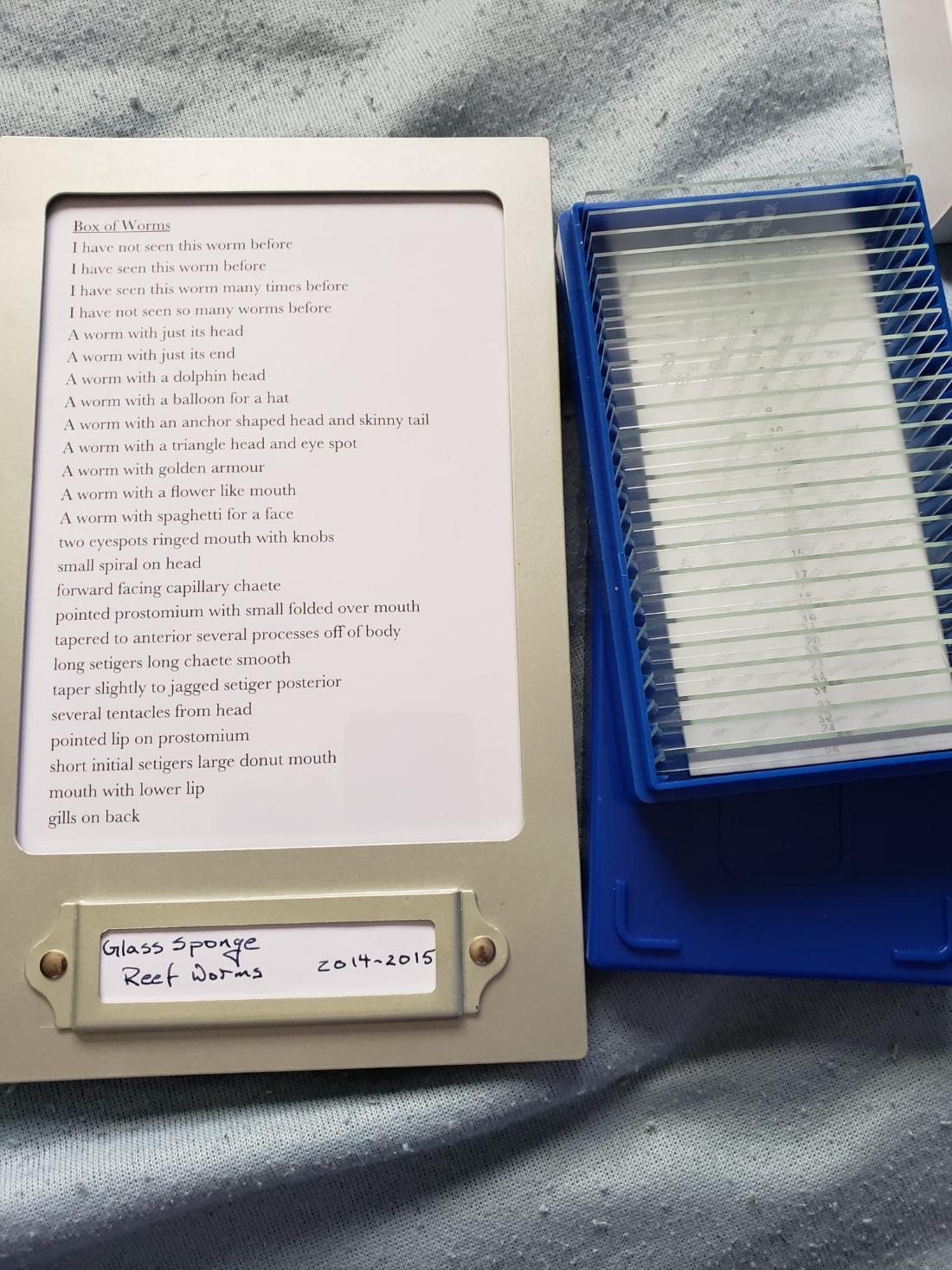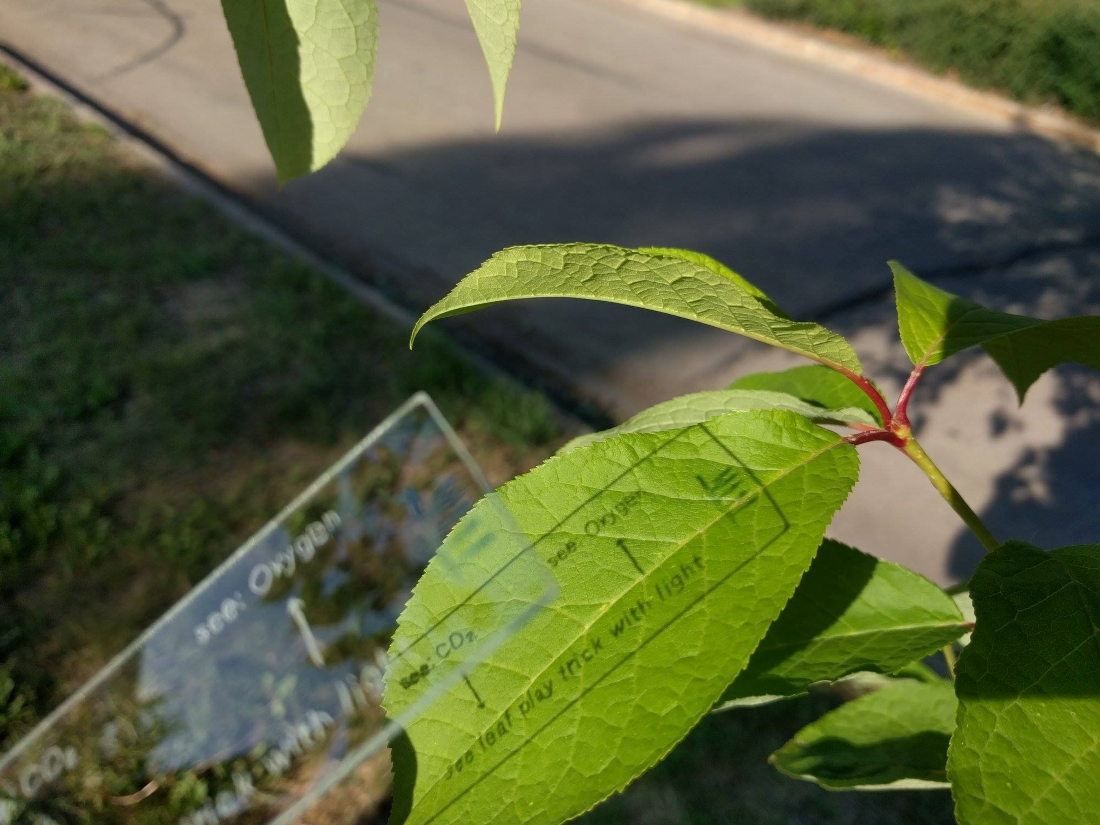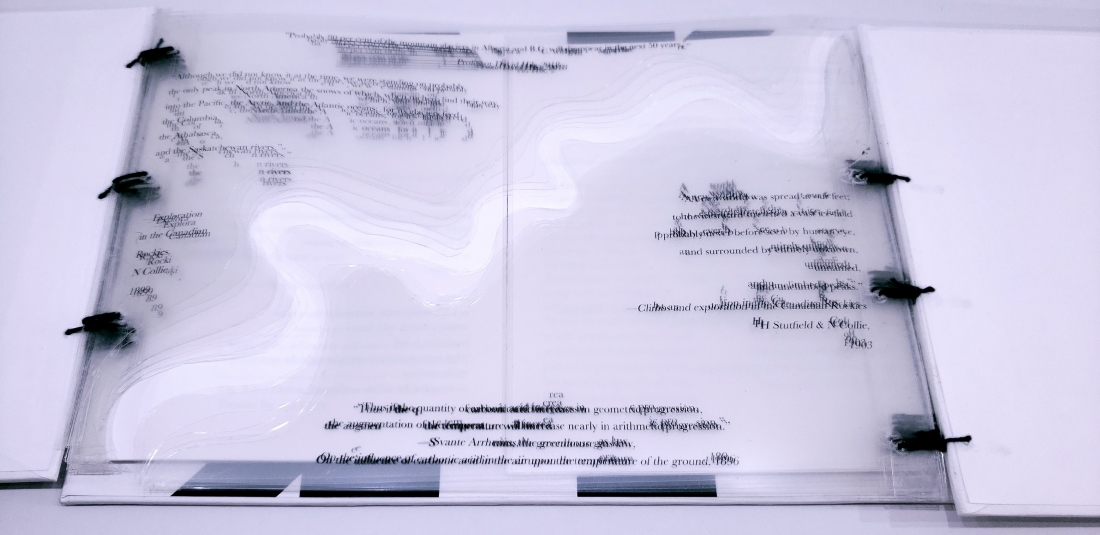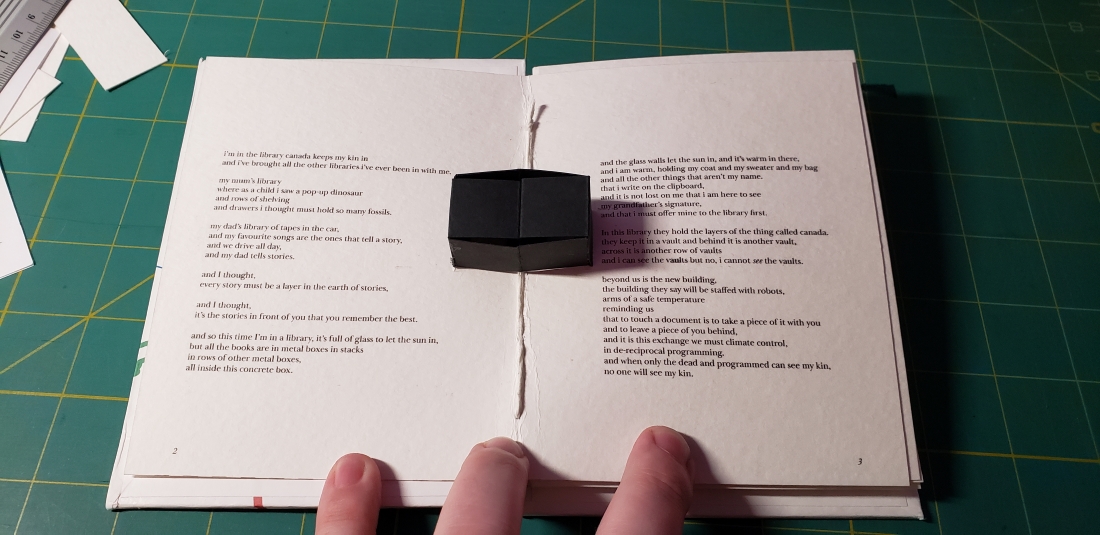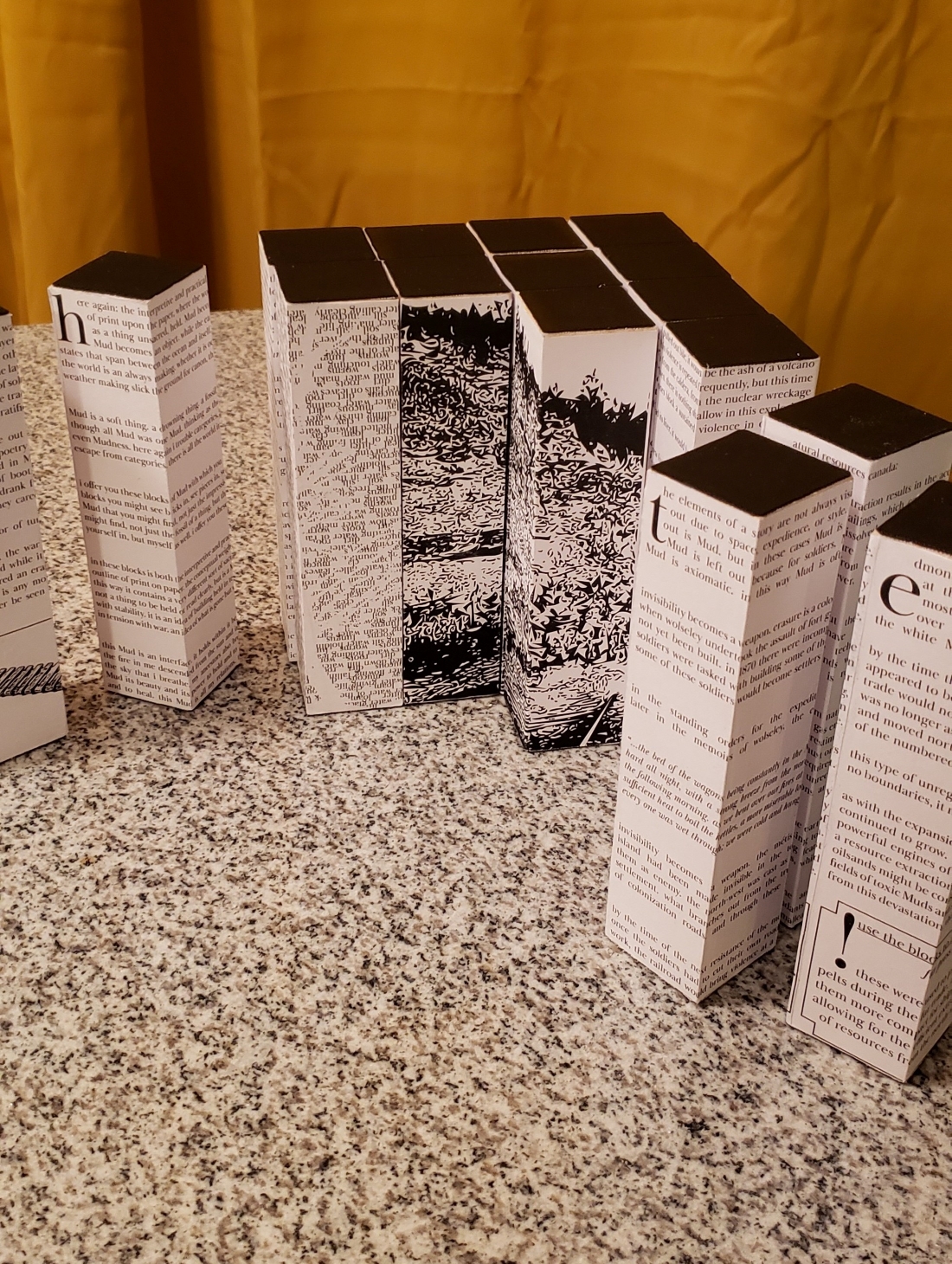Artist's Books
By Matthew James Weigel
For my last blog post as Open Book’s writer-in-residence and to close out poetry month I want to talk to you about one of my favourite things: Artist’s Books! I’ve shared some of my passion for binding my own chapbooks, as well as shown some of the lengths I’ll go to for combining my love of poetry and visual art. Artist’s books are perhaps my favourite way I love to combine all my various creative endeavours in the construction of beautiful objects.
An artist’s book can be anything the artist decides to call a book. Instead of a painting or a sculpture, an artist’s book is a work of art that takes the form of a book – or not! Some will look very much like a book, others might look like a scroll, or a deck of cards. They might not even have paper, pages, or a cover, and in fact might only loosely or conceptually be conceived of as a book. What this broad ranging medium allows us to do is consider our relationship to texts, to text-objects, to print, production, mass media, and the larger material world around us. Because an artist’s book can take so many different forms, the form that an artist’s book takes is typically quite intimately related to the content or message of the book. When both form and content speak to each other in this way, we open up a complex dialogue between our ideas and the world around us. Many special collections in libraries, and occasionally art galleries, will have artist's books available for you to look at.
Looking back, I would have to say my first artist’s book was “Box of Worms” (2018). This was a box of glass microscope slides that I individually etched using a powered hand tool. Each microscope slide was inscribed with text from my lab notebook working on my undergraduate thesis as a marine invertebrate science student. In my mind the box was a poem, and each slide was a line in the poem. I am very grateful to both Sally Leys, my PI and supervisor who led me to the project as a science student, and to Margaret Christakos, my first poetry instructor at the university level. The way microscope slides work is you place your specimen on the slide and the microscope shines a light through it and at a lens that you look through, illuminating the sample at a magnification that allows you to see it better. Not dissimilarly, by shining light through a piece of etched glass, you can cast a shadow that in this case projected the text of a description of a deep-sea worm onto the surface below.
You can see how this effect works more clearly in a one-off microscope slide that I would consider to be my second artist’s book “Photosynthesis” (2018). This is a single microscope slide that works in conjunction with the sun, and the leaf of a plant, whereby the chemical process of photosynthesis is projected on the surface of the leaf.
Over the next two years I would go on to create several more artist’s books. One was called RIVERLOT, and some of the poems in that book ended up in my full-length debut collection Whitemud Walking. RIVERLOT is a double-spine bound hardback with two covers that open up onto sheets of plastic that display a topographical relief map of the North Saskatchewan River at Edmonton. Beneath that are a pair of booklets that can be flipped open and read in a non-linear reading order, allowing you to line up pages from separate parts of the book and juxtapose different poems from whichever part of the book that you choose.
Your CanLit News
Subscribe to Open Book’s newsletter to get local book events, literary content, writing tips, and more in your inbox
I made a pop-up book, which is a very well-known format but is not usually thought of as an artist’s book, despite certainly being one.
And I also made this: “mudblocks” (2019), a set of wooden blocks wrapped in text that can be read in any order, or simply used for play. Each block tells a different story about mud, our various relationships with mud as a material, and the many amazing things it can be used for or represents. Some of the blocks contain instructions on them, prompting the reader to play with them and combine the blocks to construct different objects. It brings a great deal of joy to me to see someone intuitively pick up the blocks upon first seeing them and just start to play with them. This intensely material and tactile piece of art is definitely my favourite of the artist’s books that I’ve ever done, and I’m grateful to be able to say that soon it may be in the prototyping stage for eventual publication. Stay tuned for that.
As you can see, there are many things that writing can do that you aren’t necessarily aware of when you just look at words on a page. We too often forget that text is a physical thing, even if it’s just the projection of light from your laptop screen through the lenses of your eyeballs. Writing is one of the most fascinating ways of reaching outward, sharing, and connecting with the people around you.
I am grateful to all of you who have read my words as Open-Book.ca’s writer-in-residence for poetry month 2022, and I am grateful to the folks at Open-Book for this opportunity to share these words with you all. I’m looking forward to sharing more stories with you all soon.
The views expressed in the Writer-in-Residence blogs are those held by the authors and do not necessarily reflect the views of Open Book.
Matthew James Weigel is a Dene and Métis poet and artist. He is the designer for Moon Jelly House press and his words and art have been published in Arc, The Polyglot, and The Mamawi Project. Matthew is a National Magazine Award finalist, a Cécile E. Mactaggart Award winner, and winner of the 2020 Vallum Chapbook Award. His chapbook It Was Treaty / It Was Me is available now. Whitemud Walking is his debut collection.
